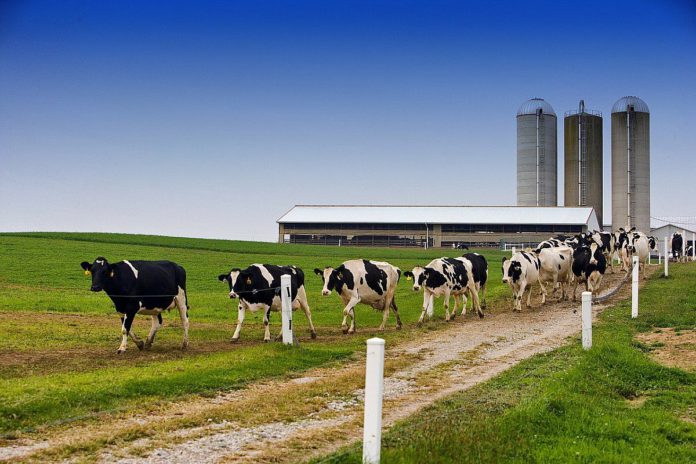The IGA dairy conference 2021 entitled ‘Future-proofing Irish dairying’ will be broadcast at 10 am on Wednesday, January 6th.
The 90-minute conference will be delivered online meaning it can be enjoyed from the comfort of your own home or office.
It consists of three short and punchy presentations, each followed by a questions and answer session chaired by IGA council member and dairy farmer, Laurence Sexton.
IGA Dairy Conference 2021
Sponsored by Yara, the conference aims to give Irish dairy farmers an insight into the future and help prepare for the 2021 season.
Dairygold CEO Jim Woulfe will open proceedings by looking at our milk markets and discuss current and future opportunities for Ireland’s dairy sector.
Continuing the theme of looking into the future, Teagasc grassland research officer, Dr Deirdre Hennessy, will examine how Irish farmers can continue to grow current levels of grass production using less chemical nitrogen.
Lastly, the third and final speaker is dairy farmer Tom O’Connell from Inniscarra Co. Cork. He will illustrate how he sets his farm up for springtime. Tom will share some of his labour-saving tips and tricks that save time and streamlines his farm.
The IGA dairy conference sponsored by Yara can be watched on www.irishgrassland.ie
Presentation 1:
‘Can we sell our milk?’
Jim Woulfe, Dairygold Co-op CEO
Woulfe is the Chief Executive Officer of Dairygold Co-op, will open the conference with an insightful paper simply entitled ‘Can we sell our milk’?
Jim has steered and overseen the development of Dairygold Co-op through the recent years of milk-pool expansion on farms and processing levels.
Looking ahead, with a larger annual milk pool being produced and with opportunities for further expansion still available, he will speak about the current and future opportunities for the Irish dairy sector to be sustained and to continue to grow, particularly reflecting on the need for markets for the milk output of the Irish dairy herd.
Presentation 2:
‘Can we reduce chemical N fertiliser application without impacting herbage production?’
Dr Deirdre Hennessy, Teagasc grassland research officer
The use of nitrogen (N) fertiliser on farms is under scrutiny, and the quantity of chemical N fertiliser that will be permitted for use on farms is likely to be reduced in the years ahead.
In this presentation, we will look at what can be done on-farm so that we can continue to grow enough grass to meet the demand of the dairy herd if chemical N fertiliser is reduced. Making the best use of the N available is crucial in terms of grass growth.
Research shows that increasing white clover on-farm has herbage production benefits when N fertiliser is reduced. Increasing N use efficiency is also crucial so that N losses from the system are reduced and are instead available for grass production.
Presentation 3:
‘Switched on for the spring’
Tom O’Connell, dairy farmer
Tom O’Connell farms near Inniscarra outside Cork city with his wife Helen and their four daughters. They are milking 320 cows on a milking platform of 90 ha, farming 150 ha in total.
Tom is the Labour Management focus farmer for the Teagasc Dairygold Joint Programme 2018-2021, running his operation with the assistance of two full-time staff, Daniel Lyons and Dan O’Mahony.
Tom’s herd delivered 481kgs milk solids/cow to Dairygold at 3.72% protein and 4.37% fat in 2019. The herd is on target to deliver this again in 2020.
Tom is going to focus on how he, Helen, Daniel and Dan are preparing to handle calving 90% of the herd in 6 weeks in spring 2021.
This will be achieved through having good facilities, excellent communication amongst the team, work planning and use of simple visual aids to ensure the various processes happen in a very efficient manner.





